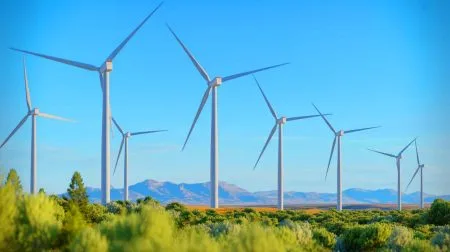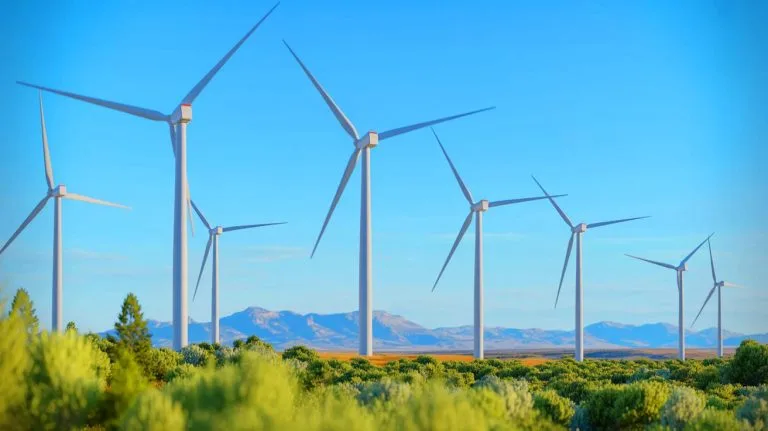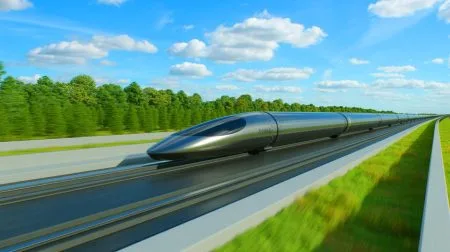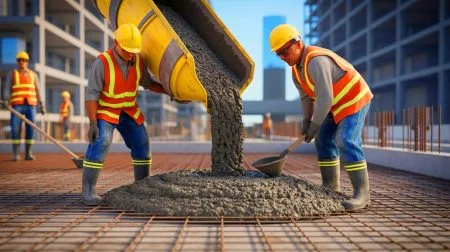| IN A NUTSHELL |
|
In the heart of Wyoming, a small start-up might just be on the verge of revolutionizing wind energy. Airloom Energy, with backing from Breakthrough Energy Ventures, aims to construct its first large-scale wind turbine by 2027. As the United States braces for potential electricity shortages, this innovative approach promises a less expensive and more efficient alternative to traditional wind power. With a unique design that deviates from the towering giants we’re accustomed to, could this be the answer to the country’s impending energy crisis?
Airloom Energy’s Bold New Approach
Airloom Energy is not just another player in the renewable energy sector. This Wyoming-based start-up is breaking away from conventional wind turbine designs, opting for something entirely novel. While traditional turbines stand tall with horizontal blades, Airloom’s creation is more modest in stature. Standing only a few dozen feet tall, this turbine utilizes vertical blades attached to a cable. As the blades tilt, they spin the cable, which in turn drives electricity generators.
This lower-profile design offers several advantages. Its compact form means it can be installed in locations previously unsuitable for large turbines, such as urban areas, military bases, mountainous regions, or even remote islands. By moving away from the traditional windmill shape, Airloom Energy is not only addressing the limitations of current wind technology but also opening up new possibilities for wind energy deployment in diverse environments.
The Fast-Track to Green Energy
Airloom Energy’s approach to wind power has been likened to the fast-food model—quick and cost-effective. Unlike traditional wind farms, which take years to plan, build, and operationalize, Airloom’s turbines promise a much faster setup. The company claims that its turbines can be assembled in less than a year, thanks to pre-manufactured components that are transported via a single truck.
According to Neal Rickner, the CEO of Airloom Energy, this method could provide electricity at a third of the cost of traditional wind turbines. In a world where energy demands are rising and resources are finite, reducing costs and speeding up deployment are critical. With predictions from the North American Electric Reliability Corporation suggesting that half of the United States could face electricity shortages by 2035, Airloom’s strategy seems particularly timely.
Strategic Investments and Pilot Projects
Airloom Energy has already secured substantial financial backing, raising nearly $14 million to fund its exploratory efforts. The start-up is currently focusing on a pilot site near Rock River, Wyoming. This project will be crucial in evaluating the performance of their innovative turbine and refining its costs.
The pilot site will serve as a proving ground, allowing the company to gather data and optimize their design before scaling up production. As the start-up gears up for a full-scale launch in 2027, the insights gained from this project could be pivotal. The goal is not just to prove the concept’s viability, but also to streamline the production process and ensure that these turbines can meet the demands of a growing market.
Challenges on the Horizon
Despite its promising potential, Airloom Energy faces numerous challenges. The renewable energy sector is highly competitive, and new technologies often encounter resistance from established industries. Additionally, the company must navigate regulatory hurdles and public perception issues, especially as wind energy has been a target for political figures such as former President Donald Trump.
Moreover, the company must convince stakeholders and potential customers of the reliability and efficiency of their unconventional turbine design. While the promise of lower costs and faster deployment is appealing, widespread adoption will depend on proven performance and reliability. As Airloom continues to refine its technology, these challenges will need to be addressed head-on.
As Airloom Energy continues to push the boundaries of what is possible in wind energy, the question remains: can innovative solutions such as these truly meet the growing energy demands of the United States, and how will they reshape the landscape of renewable energy in the coming decades?
Did you like it? 4.5/5 (25)







Wow, this sounds like a game-changer for the energy industry! 🌬️
Wow, this sounds like a game-changer! How do the vertical blades affect the efficiency compared to traditional turbines? 🌬️
What kind of maintenance do these turbines require?
Finally, a startup with a realistic timeline! 🚀
Do these turbines make any noise?